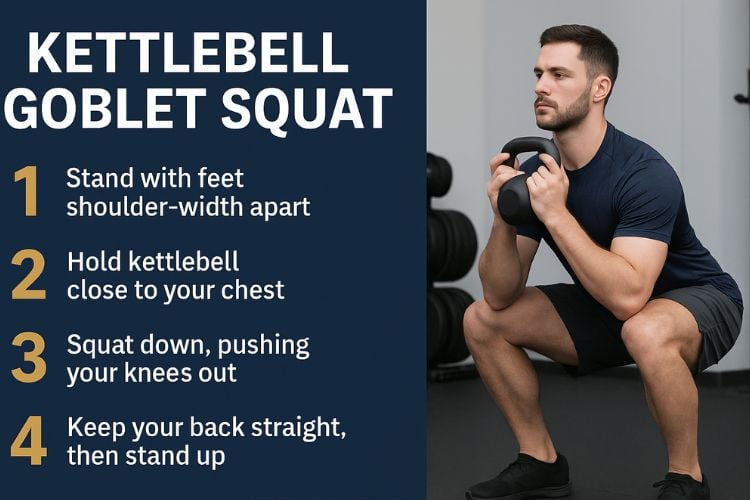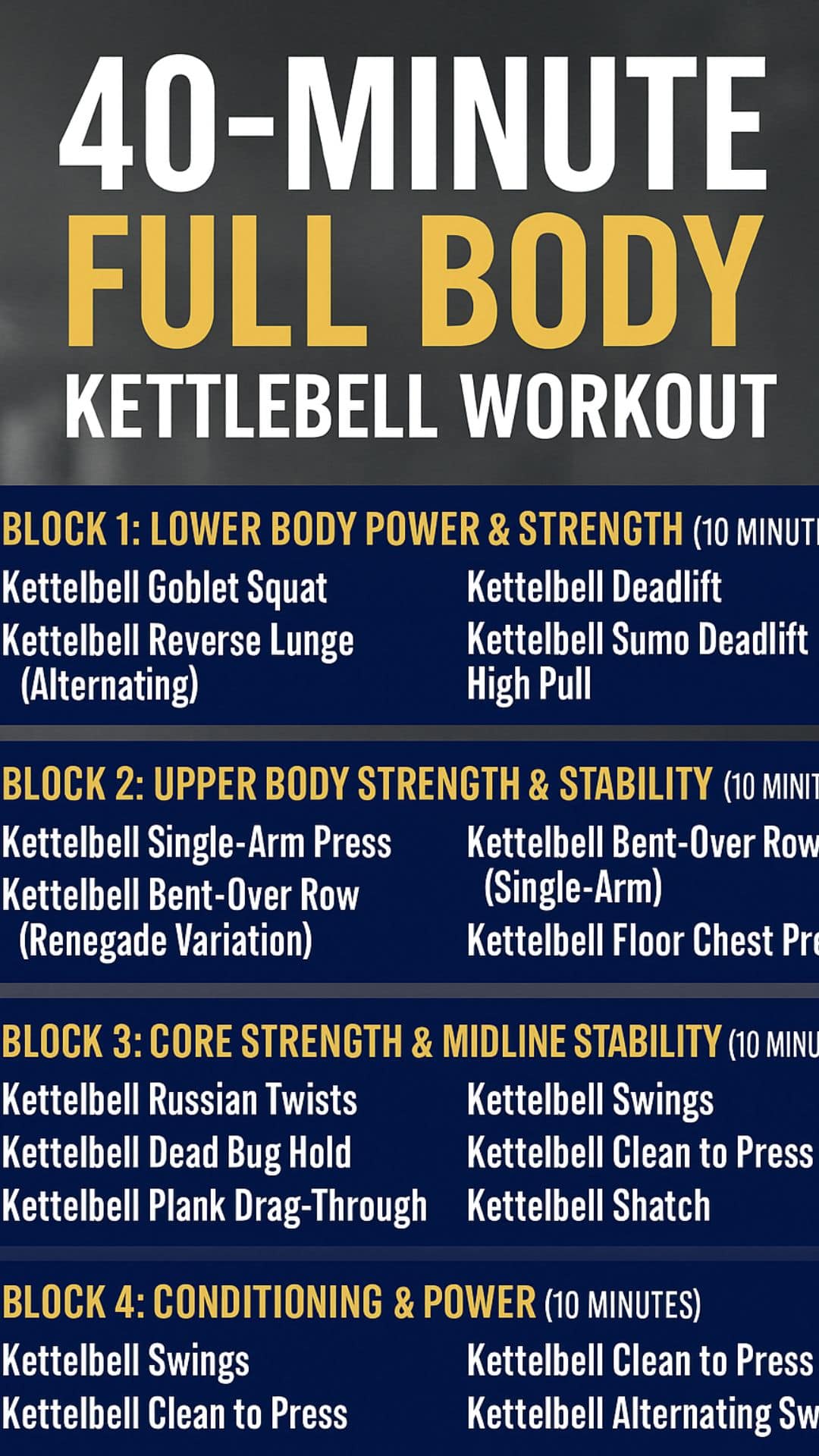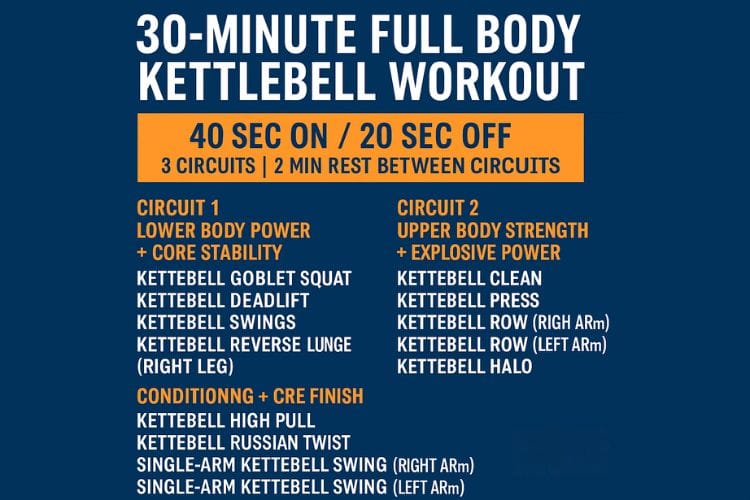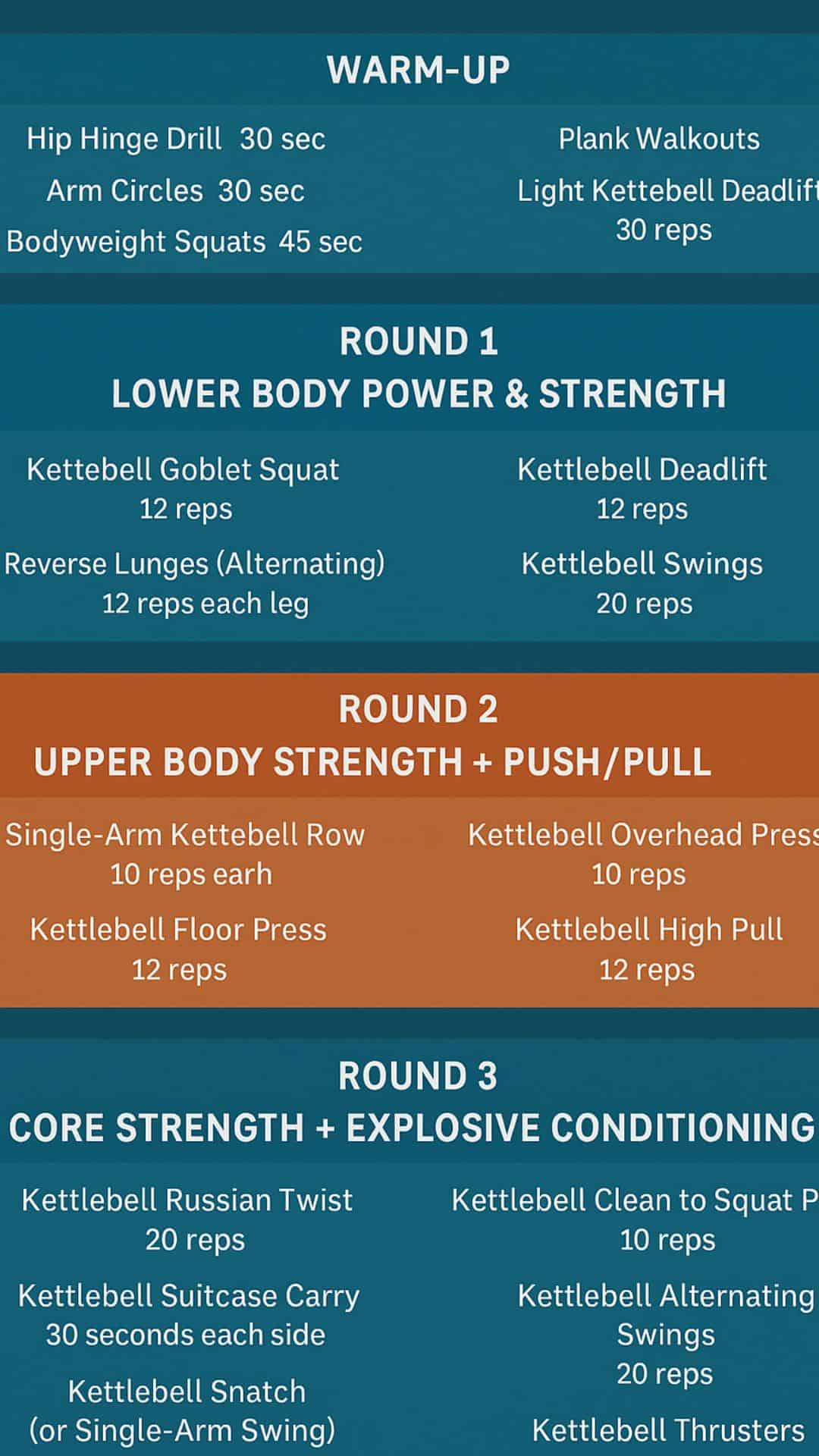
45 Minutes to Fit: A Full-Body Kettlebell Workout for All Levels

40-Minute Full-Body Kettlebell Workout (Build Muscle, Burn Fat)

30-Minute Kettlebell Workout for Total-Body Strength

25-Minute Full Body Kettlebell Workout for Strength & Fat Loss
Best Beginner Powerlifting Program

Powerlifting is a sport and strength training discipline that has gained immense popularity among men and women seeking to push their physical limits and build formidable strength. It’s not just about lifting heavy weights; it’s a journey that involves dedication, technique, and progressive training. If you’re a beginner looking to embark on your powerlifting journey, you’re in the right place. In this comprehensive guide, we’ll delve into the world of powerlifting for men and women, covering everything from the fundamentals to advanced techniques. Whether you’re a seasoned lifter looking to refine your skills or a complete novice eager to start, this article will provide valuable insights to help you get started and achieve your powerlifting goals.
1: Understanding Powerlifting For Beginner
Before you dive into the world of powerlifting, it’s essential to understand what it’s all about. Powerlifting is a strength sport consisting of three primary lifts: the squat, bench press, and deadlift. The goal is to lift as much weight as possible for a single repetition in each of these exercises. Unlike bodybuilding, where aesthetics are the focus, powerlifting prioritizes raw strength and performance.
The Three Powerlifting Lifts
Squat: The squat is often considered the king of all exercises. It primarily targets your quadriceps, hamstrings, glutes, and lower back. You’ll lift the barbell from a squat rack, squat down to at least parallel, and then return to the starting position.
Bench Press: The bench press targets the chest, shoulders, and triceps. You’ll lie on a flat bench and lift the barbell off a rack, lower it to your chest, and then press it back up to full arm extension.
Deadlift: The deadlift works your entire posterior chain, including the lower back, glutes, hamstrings, and traps. You’ll lift the barbell from the ground to a standing position in one fluid motion.
2: Setting Your Goals
Setting clear goals is crucial for success in powerlifting. Determine what you want to achieve, whether it’s increasing your overall strength, competing in powerlifting competitions, or simply improving your physique. Your goals will guide your training program and help you stay motivated.
SMART Goal Setting For Beginner Powerlifting
Make your goals SMART:
- Specific: Define exactly what you want to achieve, such as increasing your squat max by 50 pounds.
- Measurable: Use quantifiable metrics to track your progress, like adding 5 pounds to your lifts each month.
- Achievable: Ensure your goals are realistic and attainable within your current capabilities.
- Relevant: Align your goals with your overall fitness objectives and interests.
- Time-bound: Set a timeline for achieving your goals, whether it’s three months or a year.
3: The Importance of Technique
Proper technique is the foundation of powerlifting. It not only maximizes your strength but also prevents injuries. Each lift has its specific form and mechanics that you need to master.
Squat Technique For Beginner Powerlifting
- Stand with your feet shoulder-width apart and the barbell across your upper back.
- Keep your chest up, back straight, and core engaged.
- Lower yourself by bending at the hips and knees until your thighs are parallel to the ground.
- Push through your heels to return to the starting position.
Bench Press Technique
- Lie on the bench with your feet flat on the ground.
- Grip the barbell slightly wider than shoulder-width apart.
- Lower the barbell to your chest, keeping your elbows at a 45-degree angle.
- Press the barbell back up to full arm extension.
Deadlift Technique For Beginner Powerlifting
- Stand with your feet hip-width apart and the barbell over the middle of your feet.
- Bend at the hips and knees to grip the barbell with both hands.
- Keep your back flat, chest up, and core tight.
- Stand up by straightening your hips and knees, lifting the bar to a standing position.
4: Creating a Training Program
To excel in beginner powerlifting, you need a well-structured training program that focuses on progressive overload. This means gradually increasing the weight you lift over time. A typical powerlifting program includes three primary components: strength training, accessory work, and recovery.
Strength Training
- Frequency: Aim to train each of the three powerlifting lifts at least once a week.
- Sets and Reps: Start with 3-5 sets of 3-5 reps for each lift to build strength.
- Progression: Increase the weight or reps over time to continually challenge your muscles.
Accessory Work
In addition to the main lifts, include accessory exercises that target specific muscle groups. These exercises can help address weaknesses and improve overall performance. For example:
- Leg Press: Strengthens the quadriceps and glutes.
- Dumbbell Rows: Targets the upper back and lats.
- Tricep Extensions: Enhances triceps strength for the bench press.
Recovery For Beginner Powerlifting
Rest and recovery are essential for muscle growth and injury prevention. Make sure to:
- Get adequate sleep (7-9 hours per night).
- Manage stress through relaxation techniques.
- Include rest days in your training schedule.
5: Nutrition and Diet
A well-balanced diet is critical for powerlifting success. Proper nutrition fuels your workouts and supports muscle growth and recovery.
Macronutrients
- Protein: Essential for muscle repair and growth. Aim for 1.2 to 2.2 grams of protein per kilogram of body weight.
- Carbohydrates: Provide energy for your workouts. Consume complex carbs like whole grains, fruits, and vegetables.
- Fats: Necessary for overall health and hormone production. Include healthy fats from sources like avocados and nuts.
Meal Timing For Beginner Powerlifting
- Pre-Workout: Eat a balanced meal 2-3 hours before training to provide sustained energy.
- Post-Workout: Consume a protein and carb-rich meal within 2 hours of your workout to support recovery.
Hydration
Stay hydrated by drinking plenty of water throughout the day. Dehydration can negatively impact your strength and performance.
6: Monitoring and Tracking Progress
Regularly tracking your progress is essential to ensure you’re on the right path and making gains in your powerlifting journey.
Training Log For Beginner Powerlifting
Keep a detailed training log to record your lifts, sets, reps, and the weight used. This will help you track your progress and make adjustments to your program as needed.
Body Measurements
Measure key body metrics like body weight, body fat percentage, and muscle measurements to gauge changes in your physique over time.
Performance Metrics
Track your one-rep max (1RM) for each of the beginner powerlifting lifts. Seeing your numbers go up is a great motivator.
Adjustments and Adaptations
Review your progress regularly and adjust your training program, nutrition, and recovery strategies accordingly to continue making gains.
7: Staying Safe and Preventing Injuries
Safety should always be a top priority in powerlifting. Lifting heavy weights comes with inherent risks, but you can minimize them with the right precautions.
Warm-Up
Prior to each training session, perform a thorough warm-up to prepare your muscles and joints for the demands of heavy lifting. Include dynamic stretches and mobility exercises.
Proper Form For Beginner Powerlifting
Maintain proper form throughout your lifts to reduce the risk of injury. Consider working with a qualified coach or trainer to ensure your technique is on point.
Listen to Your Body
Pay attention to any signs of pain or discomfort. If something doesn’t feel right, don’t push through it. Rest, recover, and seek medical advice if needed.
Gradual Progression
Avoid the temptation to lift too heavy too soon. Progress gradually to allow your body to adapt to the increasing demands.
8: Joining a Powerlifting Community
Powerlifting is not just a sport; it’s a community. Joining a local powerlifting gym or an online community can provide valuable support, motivation, and camaraderie on your journey.
Local Powerlifting Gym
Training at a powerlifting-specific gym can expose you to experienced lifters as a beginner, coaching, and a supportive environment.
Online Communities
Participating in online forums, social media groups, and powerlifting communities can connect you with like-minded individuals who can offer advice and encouragement.
Competitions
Consider entering powerlifting competitions to test your strength and meet fellow lifters. Competing can be a rewarding experience and a great way to set new goals.
Embarking on a beginner powerlifting journey as a beginner is both challenging and immensely rewarding. By understanding the fundamentals, setting clear goals, mastering proper technique, creating a structured training program, focusing on nutrition, and staying safe, you can unleash your strength potential and achieve impressive results. Remember that progress in powerlifting takes time, dedication, and patience, so stay committed to your goals, track your progress, and enjoy the journey of becoming a stronger version of yourself. Welcome to the world of powerlifting, where your limits are meant to be pushed and your strength knows no bounds.
Most Recommended
Subscribe to our Newsletter
Stay up to date on the latest men’s health, fitness and lifestyle trends and tips.
About Us
Men’s Fit Club was started with the goal of empowering men to get the most out of their lives. This meant going beyond exercise and diet tips to really address the broad range of issues that men face on a daily basis – topics like recreation, finding love, sexual health and even sound fashion advice.
Quick Links
© COPYRIGHT MEN'S FIT CLUB 2025. All Rights Reserved

